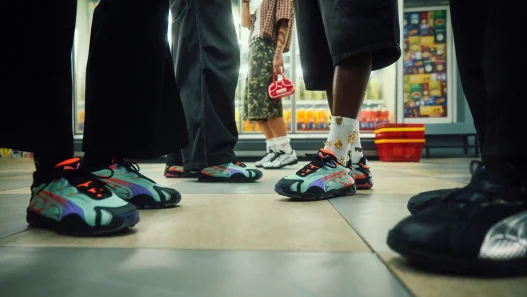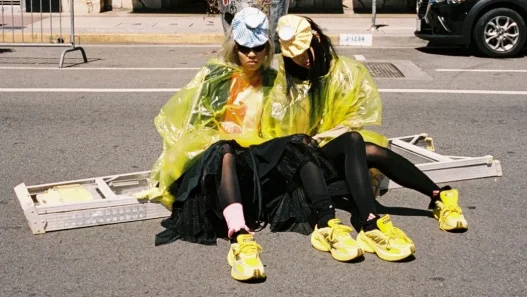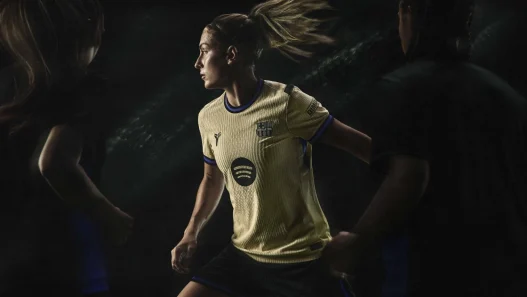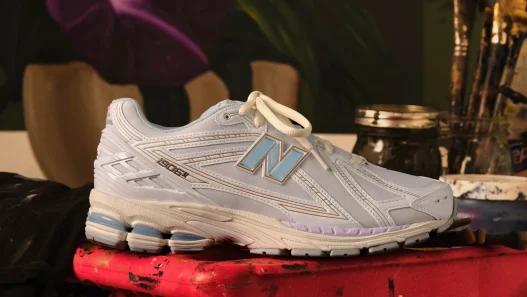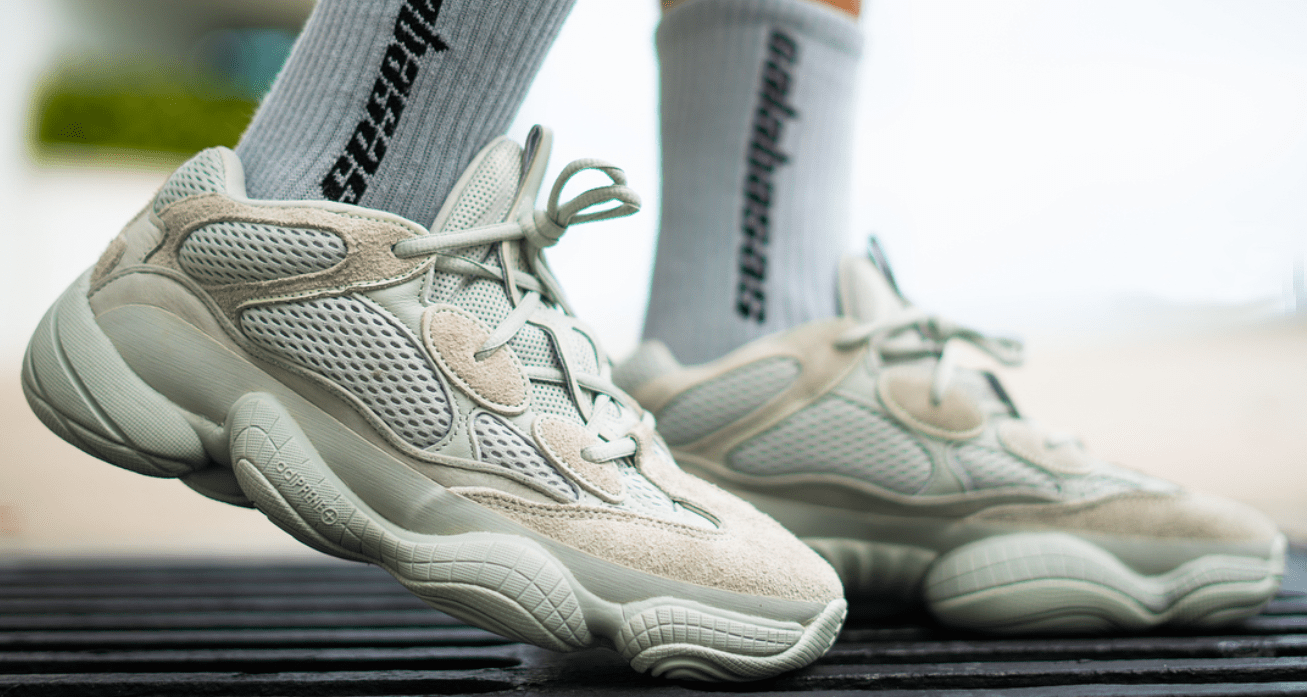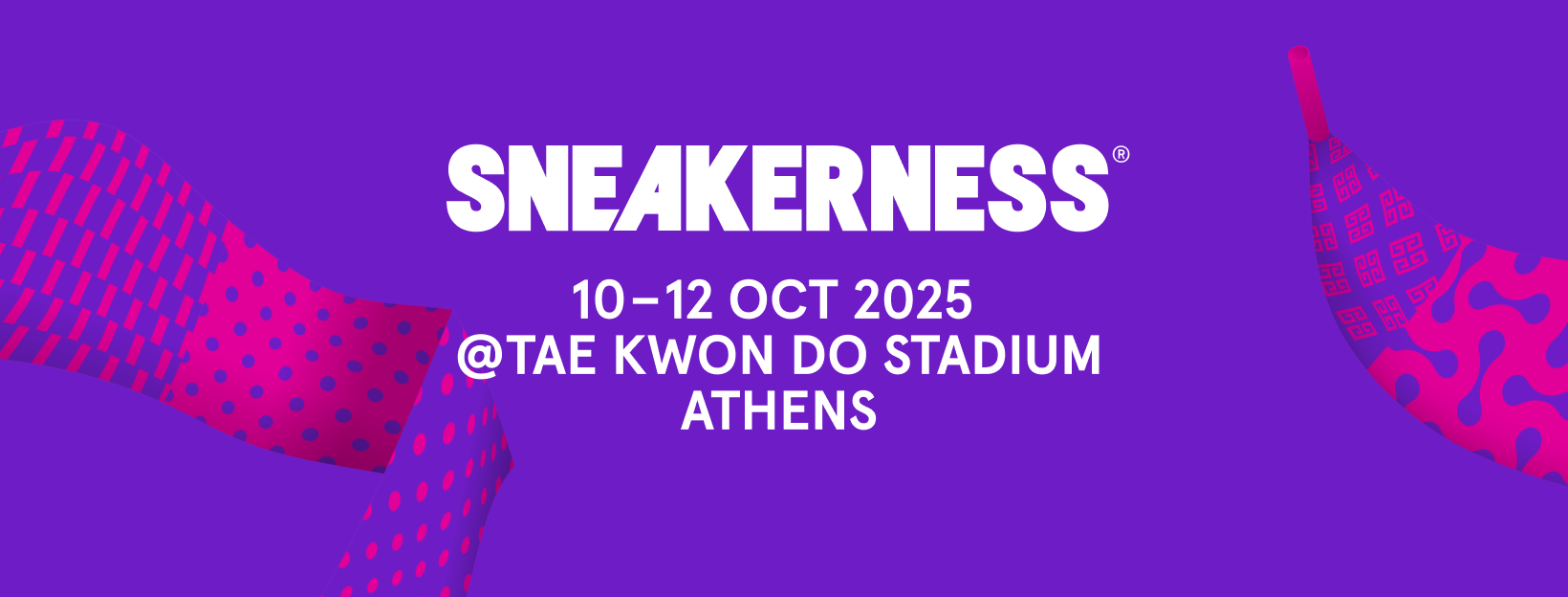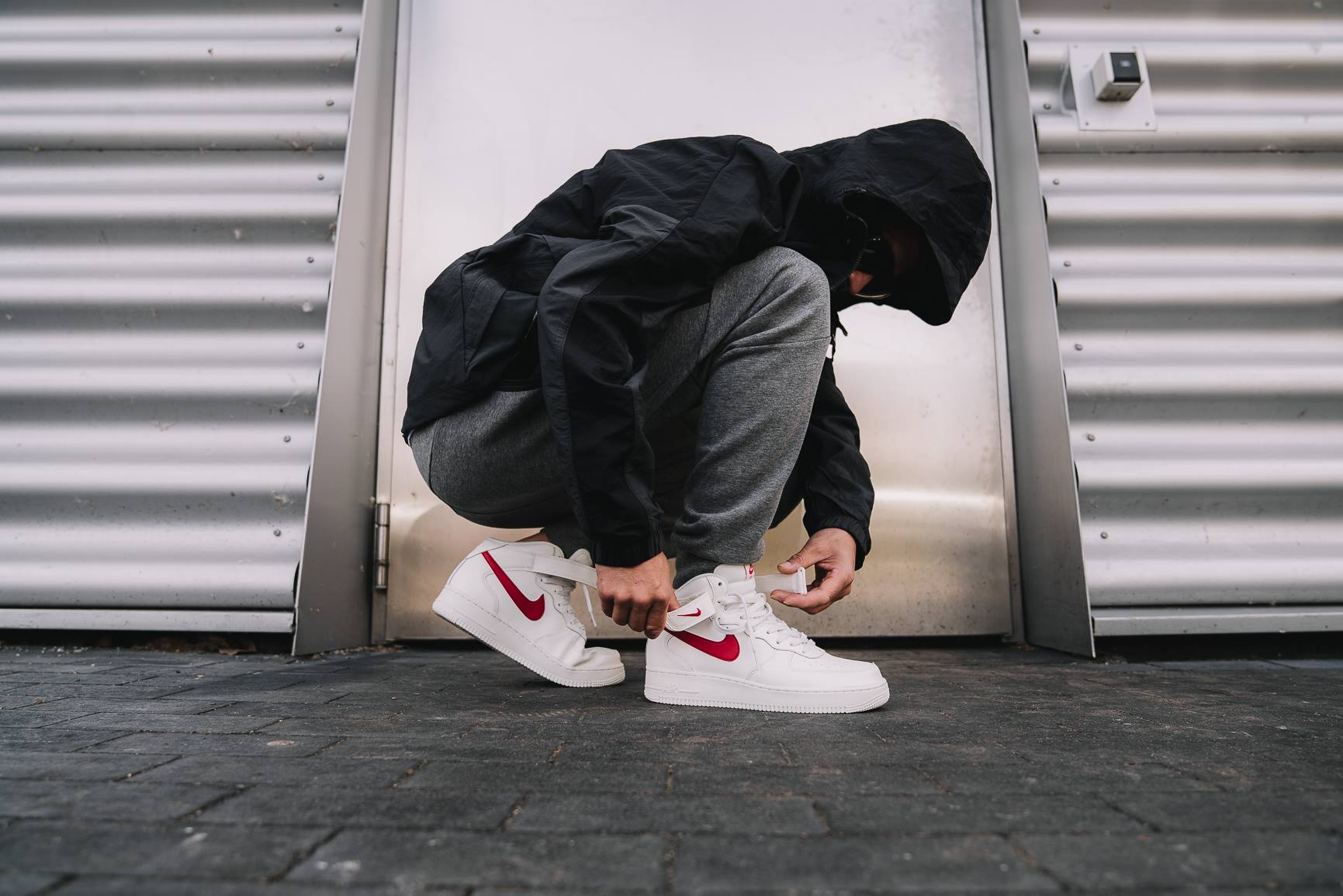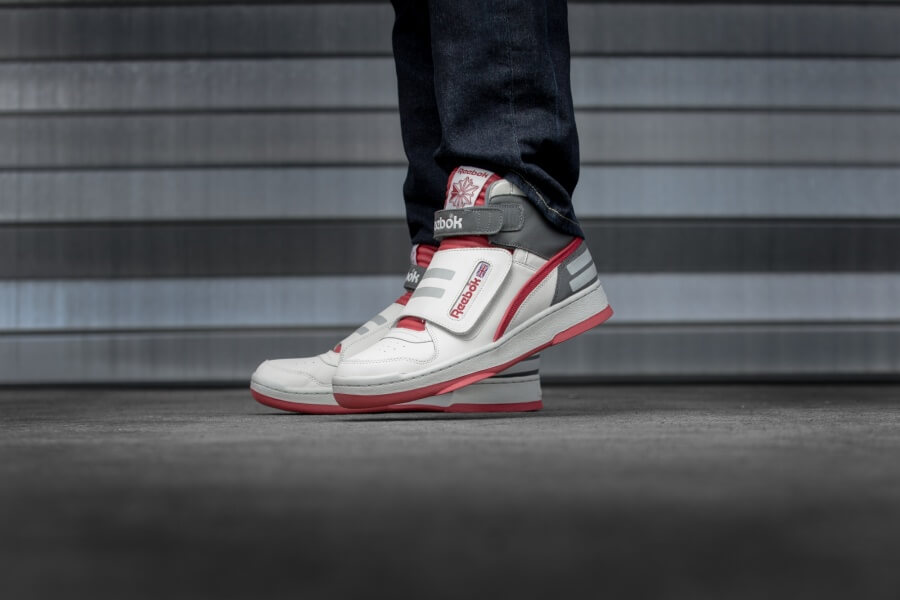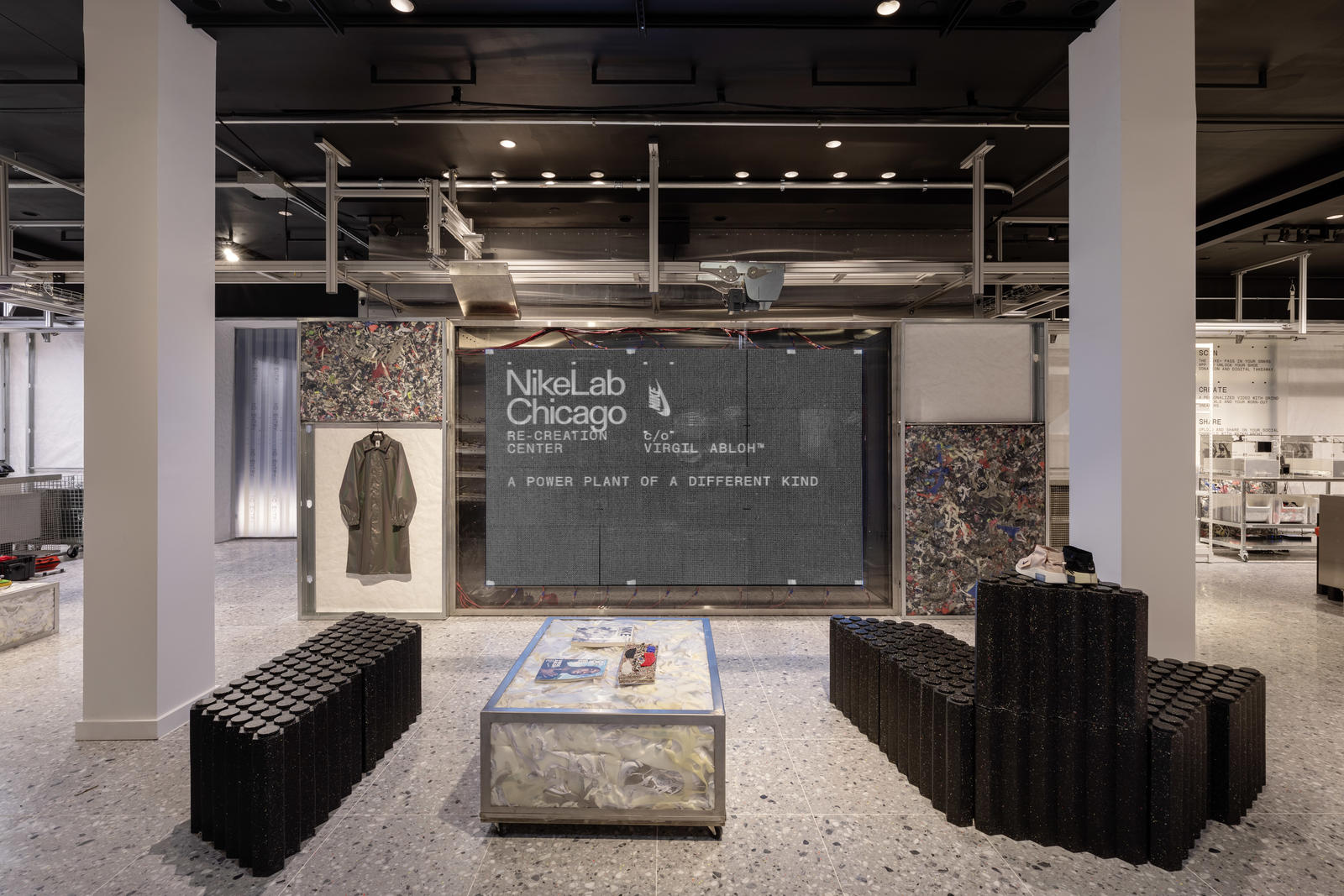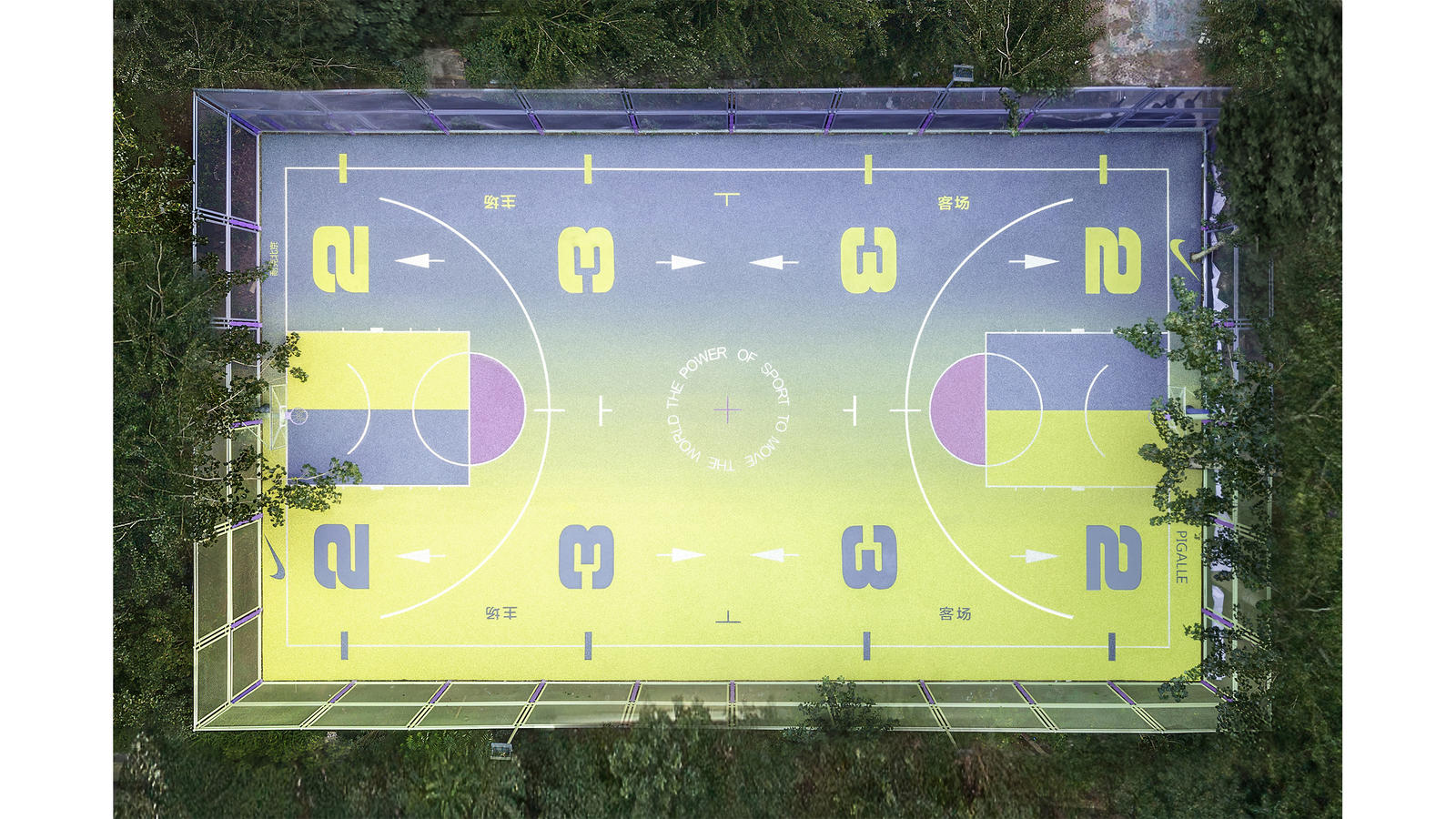How German skateboard clothing brand Homeboy created the blueprint for street-inspired apparel in the 1980s.
Here’s a surprising streetwear history fact: One of skateboarding’s first and most influential urban apparel brands, Homeboy, was not born in the rugged streets of New York City but the European banking capital of Frankfurt, Germany.
The brainchild of surfer and boardsports apparel pioneer Jürgen Wolf, Homeboy barged onto the skateboarding scene in 1988 ready to shake things up by producing “Loud Couture”. Backed by a high-profile skateboard team, the brand created a new category in board sports retail with its extensive collection of street-themed soft goods inspired by hip-hop, graffiti and action sports culture.
At the time, skateboard clothing was mostly an afterthought in an industry dominated by hardgoods manufacturers making wheels, trucks, and boards. But Homeboy blazed its own trail as a pure-play clothing brand and became one of the early pioneers of streetwear.

“Over 30 years ago, I founded Homeboy as a skateboard clothing brand. Just that… Skatewear!” said Jürgen Wolf.
The rest is history: Homeboy created the mold for street-inspired looks by introducing staples such as the coach jacket, Xerox-style graphics and workwear-inspired pieces into skate attire.
After a hiatus in the early 2000s, the brand is now fully back on the scene with Jürgen Wolf and son Julian at the wheel. Time to look back at a 1980s urban culture phenomenon – and ahead into the future with the streetwear veterans.

DOWN AND OUT IN L.A.
Ironically, Homeboy would have never seen the light of day if it wasn’t for the mother of all streetwear brands, Stüssy. Back in 1988, Jürgen Wolf was in Los Angeles on a mission to bring Shawn Stussy’s hot new brand to Germany through his distribution company, Overlook.
He already carried heavy-hitting labels such as Airwalk shoes and Town & Country Hawaii. So Stüssy would give his sales reps some extra heat to sell to German retailers. The deal was practically in the bag, negotiated in advance over phone conversations and fax messages.
At Stüssy’s small showroom in Downtown Los Angeles, Wolf was writing the first round of product orders, stocking up on all the company’s iconic tees, shorts and hats. He basically ordered everything on the menu, but took a pass on button-up silk shirts in loud patterns.
“I just didn’t think they would sell that well in Germany,” said Jürgen Wolf.
Big mistake, as it turned out. “They said that if I didn’t understand the silk shirts – I didn’t understand the entire brand. So I was the wrong person for the deal.”
And without further ado, Wolf found himself escorted out of the building. No Stüssy for him.
Standing there in the beating Cali sun without what would have been quite a lucrative deal – Stüssy was about to be huge in the late 1980s – Wolf realized he still had a few more days in Los Angeles before his flight home. So he decided to take some time to explore the scenery and hit reset.
“I was super mad. When you’re 28 years old, you still get pretty aggro,” said Wolf. “So I rented a surfboard and hit the line-up with all that pent-up aggression to clear my head.”

STRAIGHT FROM THE STREETS
After hitting a few waves, Wolf started to see what had transpired with Stüssy from a different perspective. Maybe the mission was not a complete loss just yet. Wolf had come all the way to California to bring home an entire collection from a brand that no one had heard of before in Germany.
So what if he did just that? And told people he was the first distributor to scoop up this hot new brand from the States? Never mind if it would take some bending the truth…
“Somehow I had the word ‘homeboy’ in my head, since I was really into hip-hop at the time,” said Jürgen Wolf, adding: “I was already pretty much over the whole skate rock thing.”
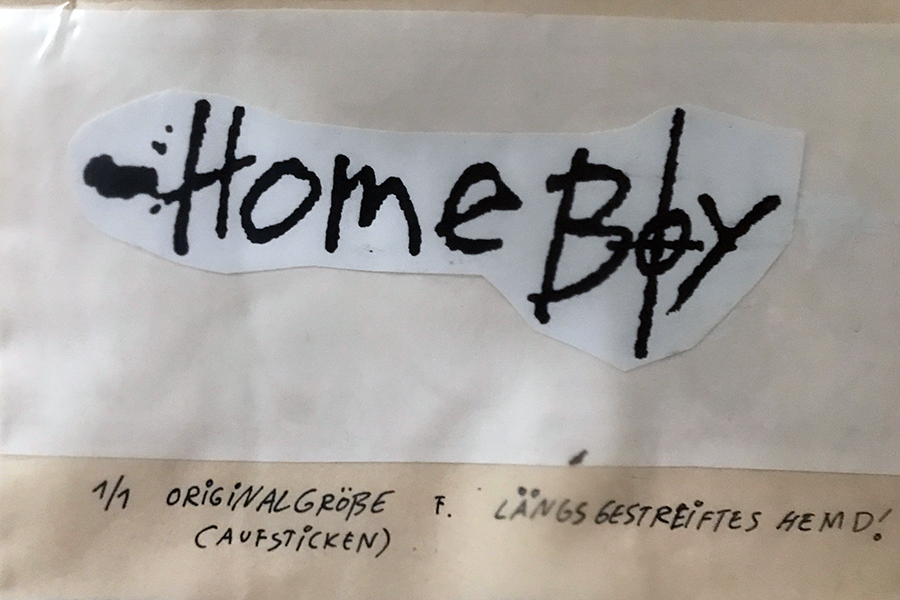
So he picked up a pen and notepad and headed to Venice Beach to put his own vision for a new apparel brand on paper. “I wasn’t going to go home and tell people how cool Stüssy is. Bullshit!”
Before working as a distributor, Wolf had already channeled his early passion for surfing into his own T-shirt design company, called X-T’s – that produced surf and skate tees for the underserved German market.
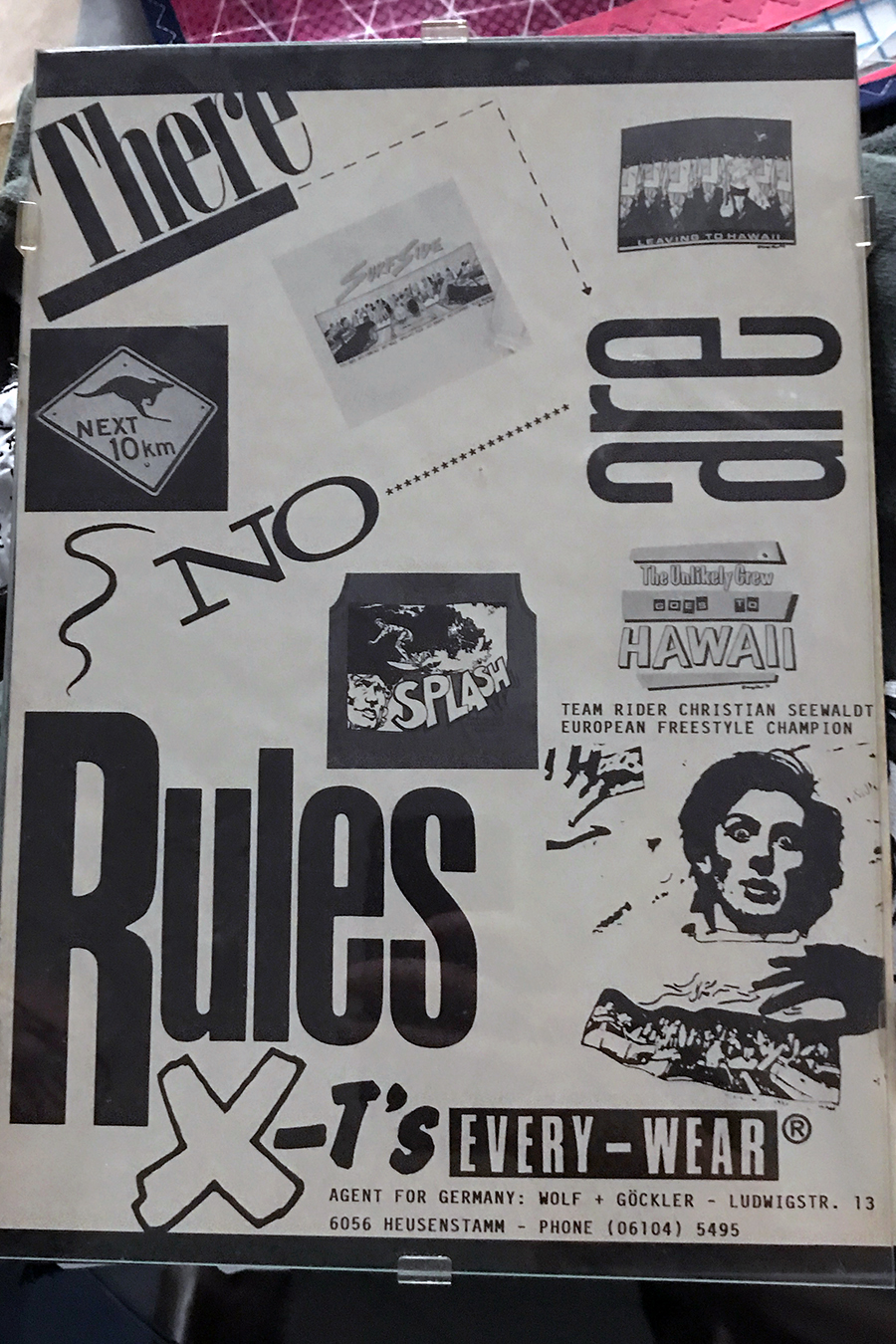
X-T’s had successfully made a name for itself by providing quality tees in bright colors and on-trend designs. Wolf had an end-to-end process in place, from design all the way to sourcing the shirts from the U.S and screen-printing locally in Frankfurt.
Clients included numerous board shops and the infamous Munster Monster World Cup of Skateboarding. In other words, Wolf he knew a thing or two about boardsports culture and what worked in the segment.
But still, this was new – and beyond just boardsports and surf or skate style. This was coming straight from the streets.
Urban Legends
In his notebook, Wolf scribbled down a logo and four designs for his new clothing brand: Homeboy. As soon as he landed in Frankfurt, he commissioned his T-shirt printer to produce six small collections consisting of T-shirts, longsleeve tees and hooded sweaters.
Then it was time for some sleight of hand, some street-style hustle. When Jürgen Wolf presented the pieces from the new ‘U.S. brand’ to his sales reps, he told them to forget Stüssy, because here was something much better.
“I said that I’d flown to L.A. but the Stüssy deal had gone South. Since I still had time, I hopped on an inland flight to New York City and met the guys from Homeboy on the Lower East Side. The coolest dudes ever! Really into skateboarding, BMX and hip-hop. Straight from the streets! And… here’s the collection!”
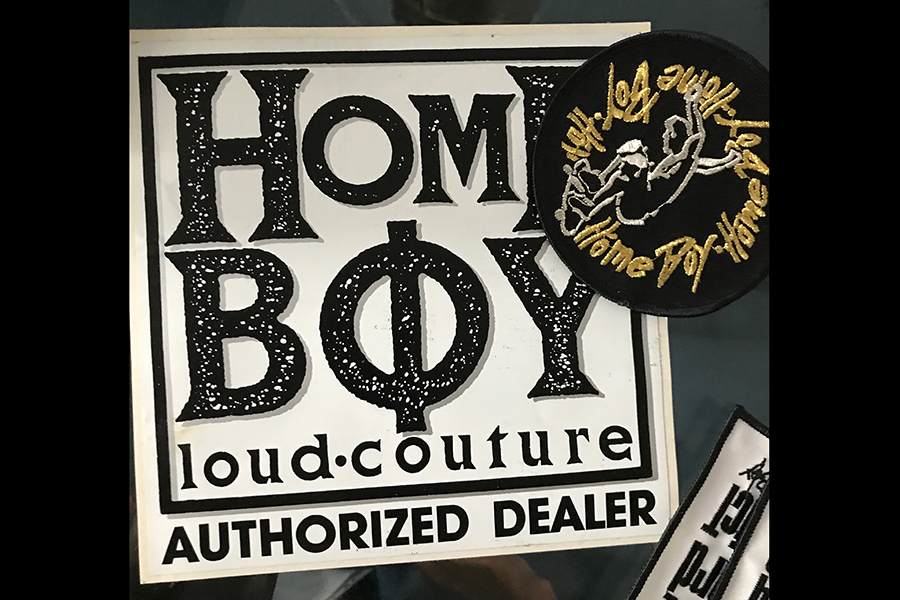
The sales reps didn’t like Jürgen Wolf’s new ‘East Coast’ clothing brand – they loved it. At the next big tradeshow for boardsports retailers, Overlook distribution showcased Homeboy Loud Couture as the latest American brand next to Airwalk and Town & Country Hawaii to an overwhelming response.
“Customers bought our gear without questions asked. They liked the stuff. If I would have told the actual truth, my reps would have probably told me, ‘You gotta be out of your mind! You’re just a shitty distributor. All your clothes suck,’” said Jürgen Wolf.
On that note, a small mutiny did erupt among his reps when Wolf finally came clean one year after launching Homeboy. “They were all really bummed and implored me to tell everyone the truth. Except this one rep, he was a bit older and more experienced. When they were done venting their anger, he looked around the room and asked: ‘So, have you sold all your product this season?’ And when everyone replied yes, he said: ‘Good, then shut up and keep selling. Nobody needs to know!’”
And nobody did. It would take years until Wolf opened up to his best retailers about Homeboy’s little secret. “And we never, ever told the end consumers. Back then, you were pretty much nothing as a German brand. Nobody would have bought it,” said Jürgen Wolf.
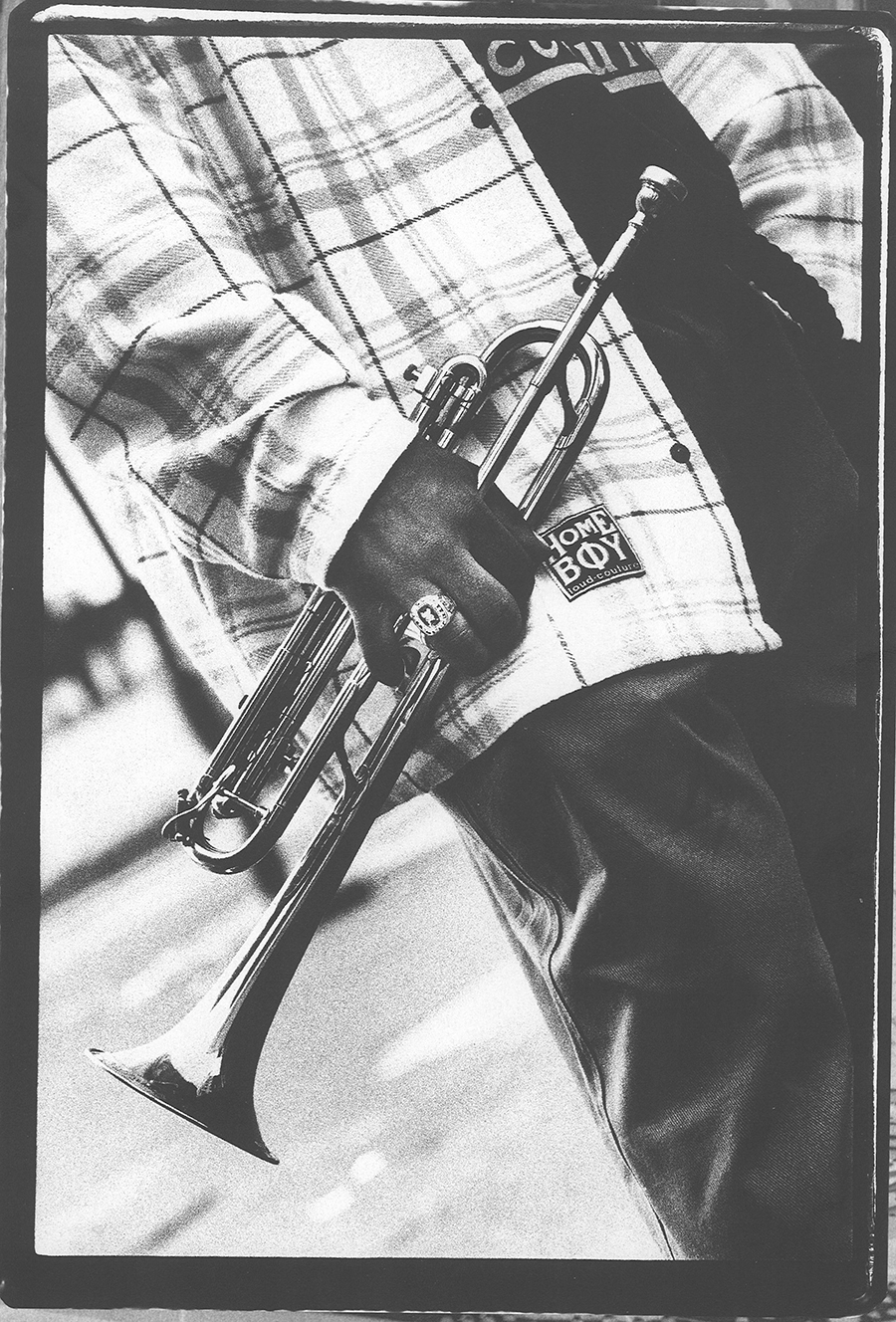
EAST COAST FLAVOR, MADE IN GERMANY
In hindsight, the East Coast origin story was a smart move, especially because it would have drawn way too much attention had Homeboy claimed to be a California brand. “There was no internet back then, so nobody could check on our story,” said Jürgen Wolf.
And it worked: Homeboy’s street-savvy aesthetics quickly caught on with consumers. Homeboy products such as graphic T-shirts, windbreakers, hoodies, shorts, sweatpants and the inevitable 1980s staple, hip packs, proved strong sellers.
Looking back, Jürgen Wolf is also proud of having pioneered what would become a major streetwear trend in the 2000s: “The Coach Jacket is one major reason for our fast success back in the days. Hundreds of thousands were sold in 40 countries worldwide. It helped showing our big brand logo to the masses. Homeboy was the first brand worldwide putting this jacket into a clothing line. All others followed us.”
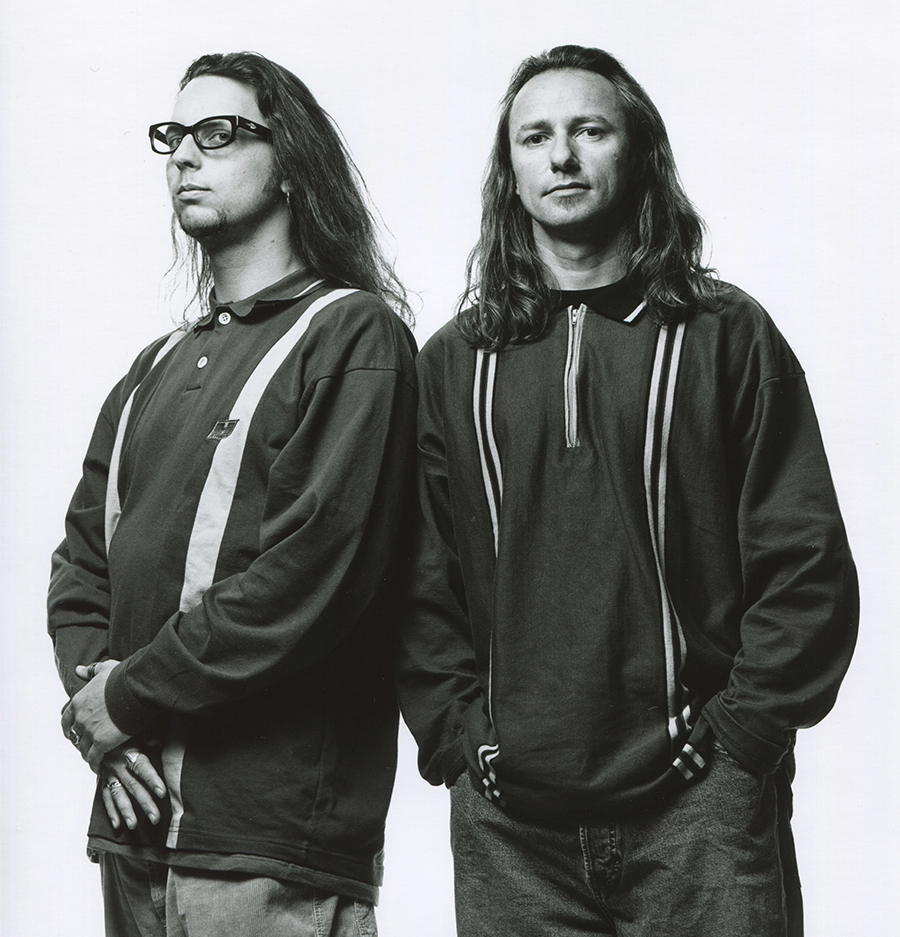
Now all Homeboy needed was a convincing catalogue – not yet called a “Look Book” in the 1980s – to create some brand magic. The grimy city streets of New York City would have been perfect for setting the tone, but Homeboy lacked the marketing budget for such an elaborate production.
So the hustle continued.
For the right street-level backdrop, the Homeboy crew scoured the eastern banking district in Frankfurt in search of the grimiest, dirtiest corners they could find. And plenty dirty it was. The first European city to boast a legitimate crack cocaine problem, Frankfurt is home to NYC-style skyscrapers and an eclectic mix of street characters.
Often referred to as ‘Mainhattan’ for its impressive skyline and location on the Main river, the European banking capital offered the appropriate street-level aesthetics for Homeboy, without breaking the travel budget.
Vintage American cars and graffiti completed the fashion shoot that built a strong foundation for Homeboy’s image in catalogues, ads, and hang tags placed on apparel.
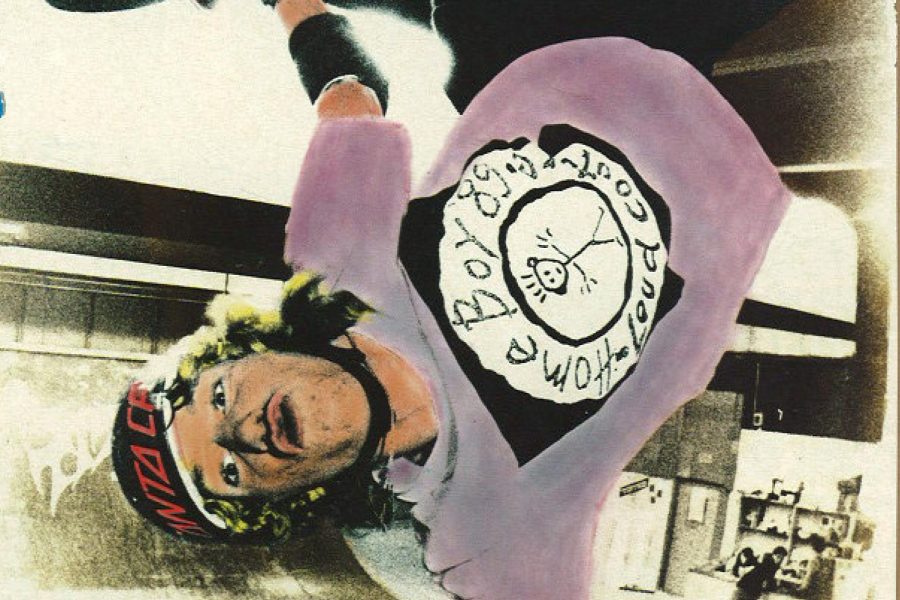
REAL SKATE INFLUENCE
Aside from urban stylistics, Homeboy managed to keep an ear to the street by involving skateboard athletes as brand ambassadors and creative consultants. Most prominently, pro skateboarder and musician Claus Grabke came on board in 1989 as a headline team rider and creative guide behind the scenes.
“He was in charge of the skate team and designed countless graphics for us,” remembers Wolf.
As the first order of business, Claus Grabke stacked the Homeboy skate team with international rippers including Jeff Hedges, Marc Mitzka, Aaron Deeter, Anders Pulpanek, Lee Ralph, and Noah Rector. Despite Homeboy’s street-oriented approach, the pro team mostly consisted of vert skaters, who attracted tons of coverage – with prominent logo placements – in the international skateboard media.
“Our guys always had editorial coverage at contests and such as well, so Homeboy and our logos and designs were really prominent,” said Wolf.
Speaking of designs: As the head of Homeboy’s art department, Grabke cultivated a gritty graphic design language marked by distorted photo prints, hand-written lettering and skateboard-inspired slogans including ‘SKATEBOARD ADDICT’.
Grabke also produced a riff on his Jim Phillips-designed pro board graphic, featuring a ticking clock, for a Homeboy ad and sweater. Team rider Lee Ralph from New Zealand penned his own signature T-shirt graphics to complement Homeboy’s boardsports-inspired vibe.
Further expanding the blueprint for a street-inspired clothing brand, Homeboy insisted on changing up their logo pretty much every season – which has long since become the standard modus operandi for streetwear labels.
“We changed the logo all the time. People didn’t understand it at all and said, ‘Why do you have to change the logo so much? Coca-Cola only has one logo and that only gets changed every hundred years or so!’”said Wolf, adding: “We didn’t really care, we just did it.”
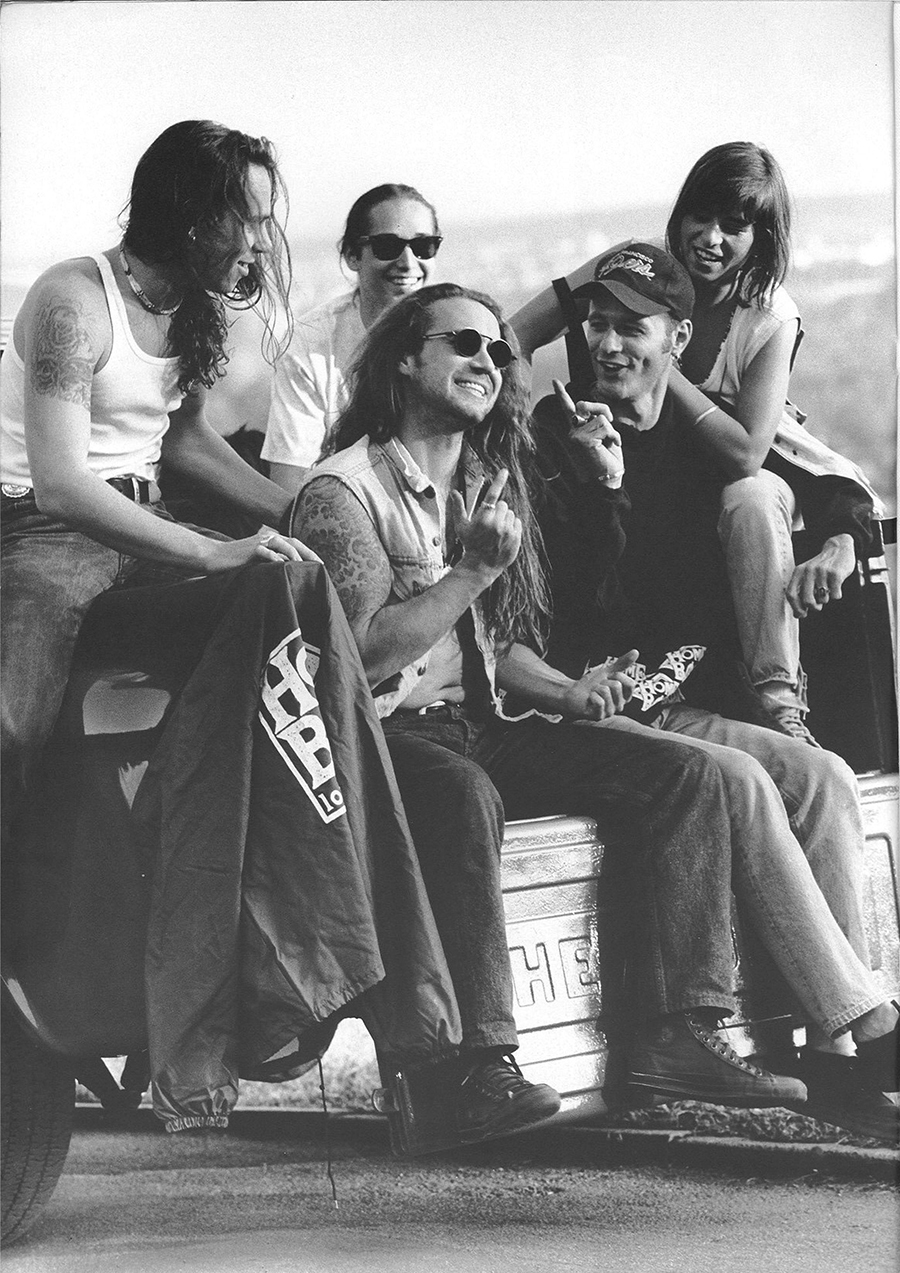
MAJOR NAME FAME
Broadening its focus beyond just skateboarding, the brand also sponsored BMX riders, rappers and hip-hop DJs, further engraining Homeboy into Europe’s budding action sports scene and urban culture. Taking advice from iconic Frankfurt-based DJ and techno music producer Mark Spoon (RIP), Homeboy supplied a few emerging artists with clothing, some of which would have their big break in the 1990s.
A wise move. These artists included influential Frankfurt rapper and producer Moses Pellham, who was 16 years old when Homeboy started flowing him gear. Over the next decade, Moses P. sold millions of records under his own name and with protégées including rapper Schwester S. and R&B sensation Xavier Naidoo, who later modeled Homeboy’s mens suits in the mid-1990s.
Wolf’s long-time business partner Holger Dahlen, who came on board in 1990 and is still part of the brand’s core team today, bet on the right horse by sponsoring a German rap act known as Die Fantastischen Vier. The massively popular Deutsch-rappers wore Homeboy on the cover of their best-selling Sony-produced album and in German teen magazine Bravo – engraining the brand in the minds of millions of young mainstream customers.
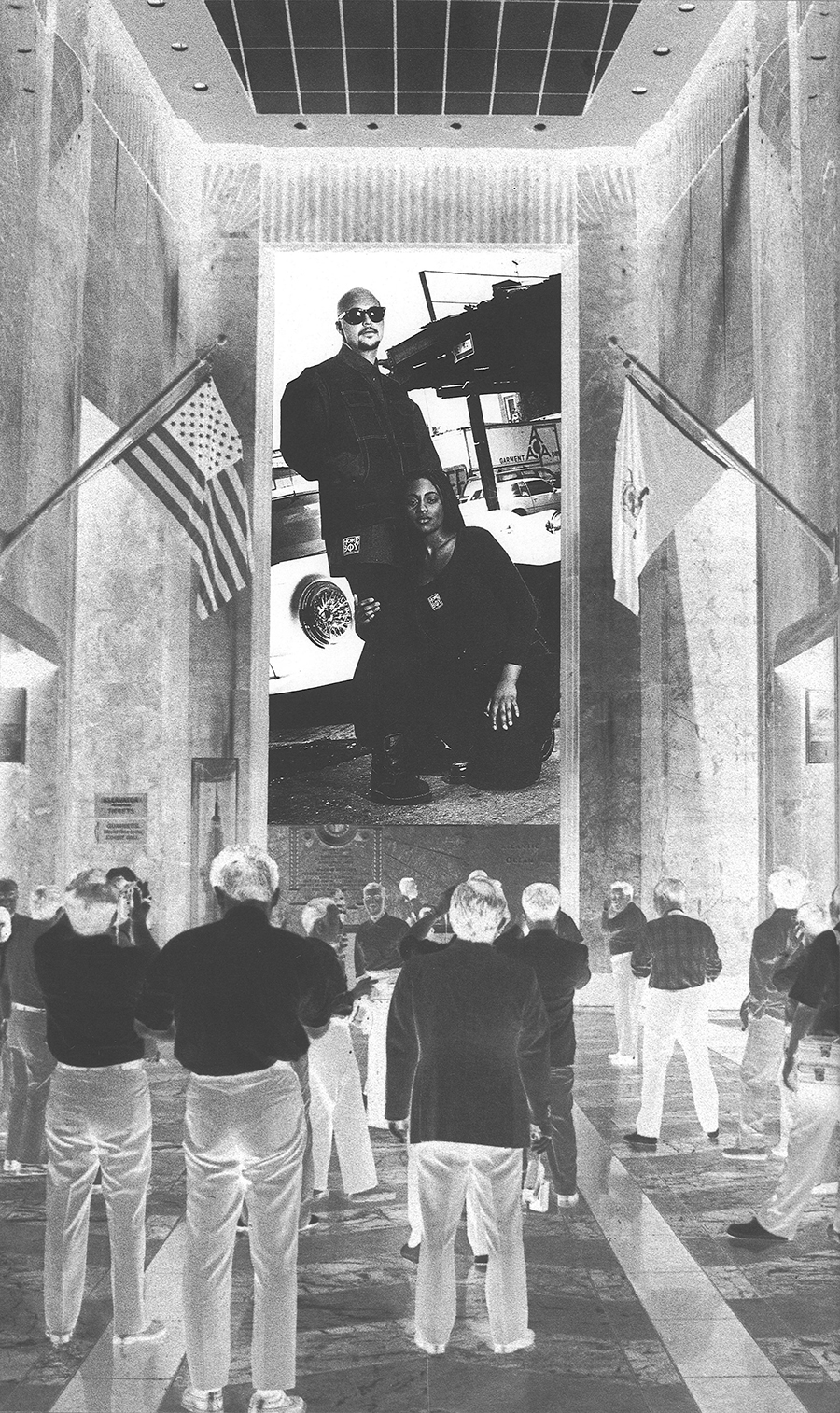
“With these music acts we were fortunate to reach an audience beyond skateboarding, people who listened to pop and urban music. Plus, features in Bravo magazine like teaching the Fanta Vier guys how to snowboard reached the kinds of huge audiences you can only dream of today.”
The close intersection with hip-hop culture also led Homeboy to incorporate baggy pants into their line-up as early as 1991. “The retailers were not digging it at all when we rolled out our baggies, but they soon came around as the rest of the scene caught up on the trend. Baggies have been a staple in our line ever since.”
With booming sales came the freedom to experiment. Wolf started producing snowboard boots, surfboards, wetsuits, wake boards, and snowboards under the Homeboy brand name, further transcending established boundaries.
“This was at a time when these individual groups, although they figured under the headline ‘action sports’, couldn’t really get along with each other. I didn’t care, and I didn’t want to have to change clothes every time I went from one sport to the other. Plus, when we fall down, we all bleed the same red blood anyway.”
As another prescient move, Wolf points out 1993’s release of Homeboy’s Gas Station apparel collection, replete with service segment-style uniforms and corporate brand logo influences that would later fuel the ‘workwear’ trend. “This was years before the big work wear companies discovered the street market,” said Wolf.

EXPANDING INTO FOOTWEAR
The year 1993 marked an important fork in the road for Jürgen Wolf’s business model. Having just started his new apparel label Original Battle Gear (OBG) for the emerging motocross, snow sports and budding downhill mountain bike markets, he decided to double down on focusing energy on his own labels. These labels also included forays into hardware such as the successful mountain bike brand Cycle Craft, a pioneer in full-suspension bicycles.
At the same time, his biggest import brand, skateboard shoe company Airwalk, was struggling. So he decided to hand the brand to former business partner Titus Dittmann, who was no longer part of Wolf’s business since 1989. From a strategic perspective, the departure of Airwalk opened up a new product segment for Homeboy: footwear.
“Up until then, I was only allowed to produce work boots because of the Airwalk deal. Now I was free and developed the collection together with former Airwalk designer Walter Telford,” said Jürgen Wolf, who had seen the potential for a new wave of low-cut, street-savvy shoes as the exclusive distributor of the Puma Clyde model that was blowing up on the streets at the time.
As it turned out, Walter Telford – with design credits including Airwalk’s best-selling ‘One’ model – had just the right formula for the early 1990s streetwear era. Although going from soft goods to shoes presents a major leap of faith, Homeboy’s foray into footwear became a major success.
“His sketches were amazing in terms of detail and technical perfection. I completely focused on Homeboy at the time and we made over 10 million Deutschmarks in footwear sales alone. Those were crazy times.”
Standout shoe releases for board sports included the skate-oriented cup sole models ‘G-Force’ and ‘Speed’, plus a pro model shoe for team rider Veith Kilberth.
Models like the mid-top suede ‘Warp’ and rubber toe-capped ‘Record’ cultivated a low-key, urban aesthetic in understated colorways.

Keeping in touch with the burgeoning snowboarding scene, Homeboy created its own line of snow boots that carried the signature street-inspired looks into the snow segment.
Models like Stalefish, Shockwave and Terror featured the brand’s ‘H’ logo next to color paneling in urban-inspired colorways and intricate lacing systems. Looking ‘street’ on the mountain was now a reality.
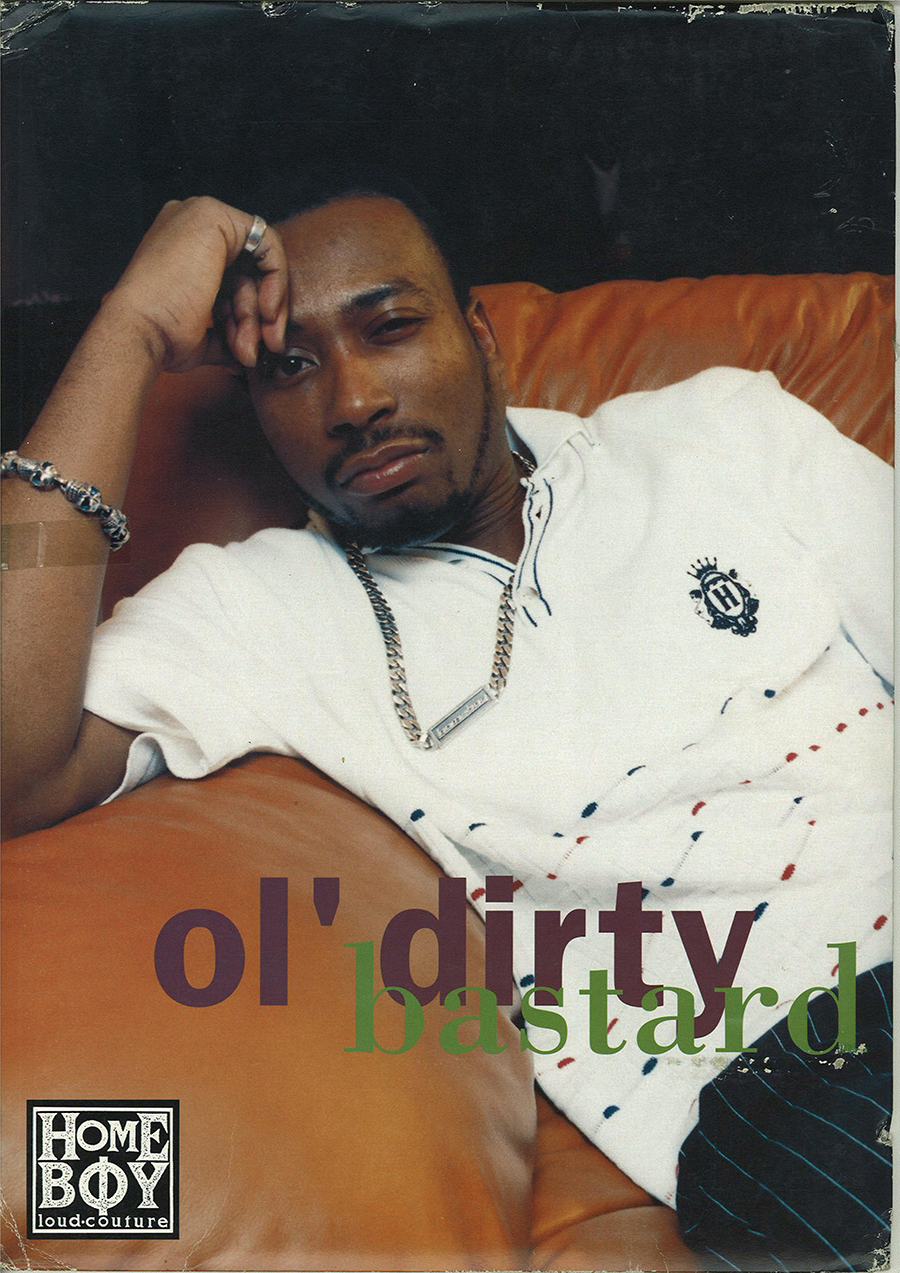
Advertisements for Homeboy shoes not only featured athletes, but a next wave of urban artists such as rappers M.O.P., Cypress Hill, and Wu-Tang Clan founding member Ol’ Dirty Bastard (RIP).
The brand also released its own compilation CDs – back before MP3s took over – sold at board shops, featuring affiliated artists.
Throughout the late 1990s, Homeboy continued to push the boundaries in the apparel segment by releasing full-fledged outerwear collections replete with ‘puffy’ jackets and heavy-duty sweatshirts.
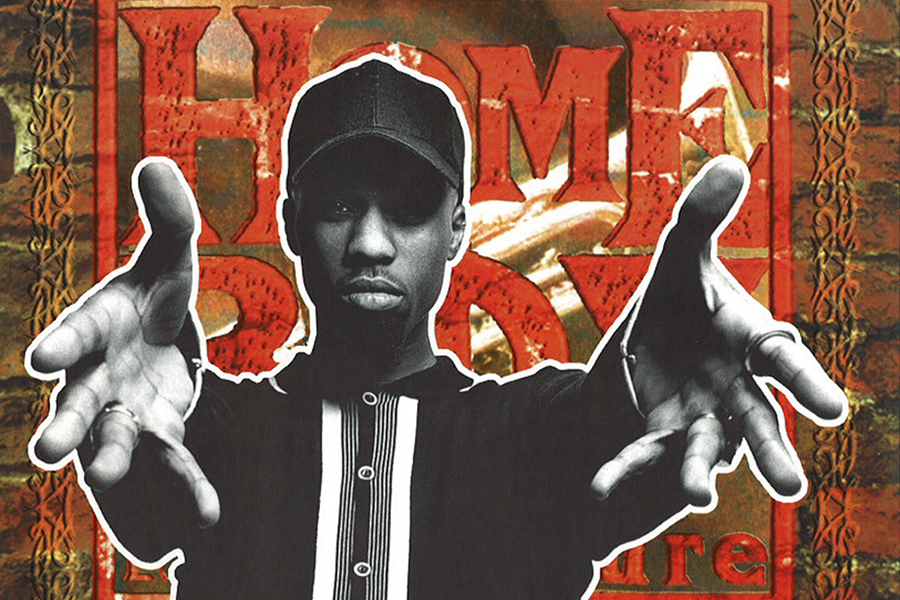
RIDING THE DIGITAL WAVE
Homeboy was firing on all cylinders and when the internet became the next frontier for global businesses, Jürgen Wolf teamed up with a venture capital partner to join the digital gold rush.
As the first step, they took over publishing house B&D, home of action sports publications such as Monster Skateboarding, Snowboarder, Surfers, MTB Downhill, Moto-X and more. In April 2000, their online retail platform for action sports, Cyber Pirates, was ready to launch on the stock market.
From today’s perspective, Cyber Pirates offered an innovative ecommerce approach: “I not only sold my own brands online, but we offered labels such as Burton to carry their products via a commissions deal. Back then, lots of brands were still hesitant to launch their own online stores, so we sold their gear online for them while they handled shipment. In return, we received 25 percent commission on each sale,” said Wolf.
The concept garnered a substantial response in the industry and Wolf had high hopes for taking Cyber Pirates public. “Except four weeks before going public, the whole Internet Bubble burst. Within a matter of one year, my venture capitalist partner went bankrupt, and soon 65 of their stockholders folded. That included my company and I was totally ruined.”
Practically overnight, Wall Street had crushed Homeboy’s street dreams and Wolf had to face the realities of rebuilding his business from the ground up.

BACK WITH A MESSAGE
The end? Not quite so soon. Business circumstances aside, Homeboy had left a substantial impression in the European boardsports scene. So about four years ago, when Wolf’s son Julian pulled an old big-logo hoodie out of the basement and rocked it to a club party, the response was off the hook.
“Dad! People freaked out at the club! They’re totally into it, you have to bring Homeboy back!” said Julian, who followed in his father’s footsteps as a surfer and skateboarder.
Having kept all the original artwork and screen-printing films – plus the rights to the brand – Jürgen Wolf did not hesitate to bring Homeboy back as a father-and-son unit. Completing the creative team, streetwear pioneer Holger Dahlen, who has played a hand in molding the Homeboy brand for over 30 years, is also part of the team.
“This time we want to do it super lean and do Homeboy 3.0. We can design everything here on our laptops and outsource the rest like manufacturing and warehousing. With the internet, it’s totally easy to do and would never have been possible back in the day,” said Wolf.
The stars have kept aligning since then as the return of Homeboy struck a note on an international level. “After a few months, people like one of my former designers, who is now in Hongkong, caught wind of what we are doing and instantly wanted to contribute. There’s a lot of excitement and energy behind it, and we’re having a lot of fun with it.”
What’s more, the streetwear pioneer also has a few thoughts about the current state of what has grown into a global billion-dollar industry.
“Streetwear is on everyone’s minds right now, and many brands are suddenly claiming to be streetwear. Even those luxury sissies at Gucci or Louis Vuitton. Now the kids of rich bankers are running around with SUPREME, not to mention the son of an Arabic sheik covering his Ferrari in SUPREME logos,” said Jürgen Wolf.
According to the veteran, it’s up to the original streetwear brands with board sports connections to set the trends, and lead where outsiders will follow. “We shouldn’t let anyone take it away from us and work together to push this trend forward for the next decade!”
In 2018, Homeboy is back on track with a full collection of streetwear staples they helped establish such as baggy pants, long-sleeve tees, and coach jackets. Plus, catering to the current 1990s renaissance, the brand is bringing back shoes in an exclusive licensed collection for Europe, manufactured by German sneaker stalwarts Hummel. “The working title is ‘1990s skate shoes in the year 2018’ and we are excited to deliver the first styles in Spring 2019.”
Looking back at the early beginnings of his brand, Wolf is amazed how things have come full circle: “30 years ago, Homeboy was founded as a skateboard clothing brand – the antipole of fashion. But ultimately, we landed exactly there, in fashion. Because streetwear, as it was called later, was a major game changer to the youth. They were able to express themselves in a cool way. And that’s why we’re still here today.”
Find out more about Homeboy Loud Couture at New Cult , official distributor of Homeboy Loud Couture in Greece.
Via: Illpaper


